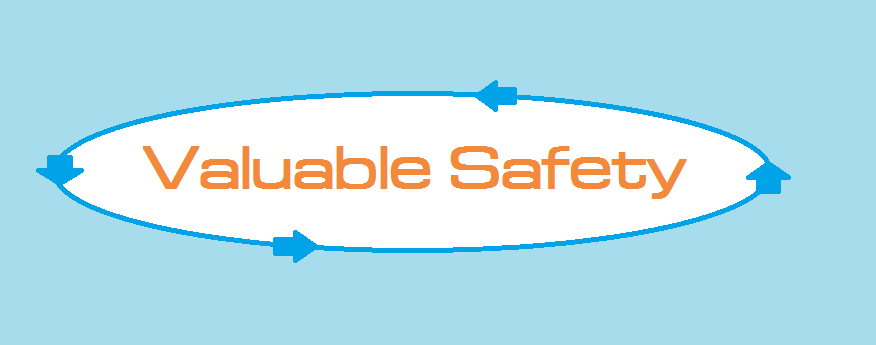AC: Alternating current
Accident: No such thing, the word should be "incident", Accident is like a tornado, hurricane, or earthquake (no person's fault)
ACGIH: American Conference of Governmental Industrial Hygienists
AIHA: American Industrial Hygiene Association
AL: Action level (refers to an employee exposure to an air borne hazard – usually ½ of the PEL)
APR: Air purifying respirator (vs. PAPR, which contains a pump and filter the local air supply)
ASSE: American Society of Safety Engineers (Materials such as steel)
ASTM: American Society for Testing and Materials
ATSDR: Agency for Toxic Substances and Disease Registry
BBP: Bloodborne pathogen
BLS: Bureau of Labor Statistics
CAR: Corrective Action Response (associated with an injury or incident)
CAS: Chemical Abstracts Service (CAS# - identifier for chemicals)
CDC: Centers for Disease Control and Prevention
CFR: Code of Federal Regulations
CGA: Compressed Gas Association
CIH: Certified Industrial Hygenist
CIH: Certified Industrial Hygenist
CSHM: Certified Safety and Health Manager
CSP: Certified Safety Professional
DART: Days away, restricted, or transfer
dB: Measure of pressure usually used for sound (noise) and measured as dBA (which is a designation of the sound a person hears – specific frequency range)
DC: Direct current
DEQ: Department of Environmental Quality (State)
DOL: Department of Labor
DOT: Department of Transportation
EAP: Employee assistance program (Human Resources)
EAP: Emergency action plan (Safety)
EE: Employee (sometimes with a apostrophe because programs don’t accept the initials with a small s)
EMS: Emergency Management System
EPA: Environmental Protection Agency (Federal)
FA: First Aid
GFCI: Ground fault circuit interrupter also known as GFI
GPO: Government Printing Office
HazCom: Hazardous Communications (communicating the hazards in the workplace to EE’s)
Hazwoper: Hazardous Waste Operations and Emergency Response
Haz Zone: An area where the potential for an employee injury elevated
HCP: Hearing conservation program
HZ or HTZ: Hertz – unit of cycles per second or measure
IAQ: Indoor air quality
ICS: Incident command system
IDLH: Immediately dangerous to life and health (related air borne concentrations of chemicals)
IH: Industrial Hygiene or Industrial Hygienist
HMIS: Hazardous Material Information System (Labeling)
ISO: International Standards Organization
JHA: Job hazard analysis
JSA: Job safety analysis
LEPC: Local Emergency Planning Committee (Emergency Response or Hazardous materials)
LOCA: Letters of corrective action
LOI: Letter of Interpretation
LOTO: Short for Lock Out Tag Out (in some cases expressed as LTT (Lock Tag and Try))
LPG: Liquefied petroleum gas
LD: Lost Days or lost day case
LT: Lost Time (in days) or as a case
LWDR: Lost work day case incident rate (also LWD)
MOC: Management of Change
MOU: Memorandum of understanding
MSDS: Material safety data sheet
MSHA: Mine Safety and Health Administration
NAICS: North American Industry Classification System (replaced the SIC system)
NEC: National Electrical Code
NEMA: National Electrical Manufacturers Association
NFPA: National Fire Protection Association
NIOSH: National Institute for Occupational Safety and Health (funded through the Centers for Disease Control (CDC)
NRC: Nuclear Regulatory Commission
NSC: National Safety Council
NTP: National Toxicology Program
OC: On-Scene Commander (during an emergency)
OJT: On-the-job training
OSHA: Occupational Safety and Health Administration
OSHAct: Occupational Safety and Health Act of 1970 (Federal)
P & ID: Piping and instrumentation diagram usually associated with Process Safety Management (PSM)
PAR: Preventative Action Response (associated with an injury or incident)
PEL: Permissible Exposure Limit (set by OSHA – and legally enforceable).
Mg/L: Sometimes expressed as mg/ml, measure of a concentration of a substance per liter of volume
PHA: Process hazard analysis – associated with PSM
PIT: Powered industrial truck
PPE: Personal protective equipment
PPM: Parts per Million (measure of concentration of a material in a million parts)
PSM: Process safety management (such as Ammonia Safety)
PSSR: Pre-Startup Safety Review
RSM: Registered Safety Manager
RSO: Registered Safety Officer
RSO: Radiation Safety Officer
RSP: Registered Safety Professional
SARA: Superfund Amendment and Reauthorizations Act of 1986
SCBA: Self-contained breathing apparatus
SCO: Safety compliance officer
SHARP: Safety and Health Achievement Recognition Program
SHARP: is also the name for sharp items that can transfer bloodborne pathogens (such as needles)
SIC: Standard Industrial Classification (used to identify a type of manufacturing)
SOP: Standard operating procedure
STEL: Short term exposure limit (usually 15 minutes exposure)
TCIR: Total case incident rates
TLV: Threshold limit value
TWA: Time-weighted average
UBC: Uniform Building Code
UL: Underwriter's Laboratories
Universal Protection: (the name given to protection people wear when they have the potential to be exposed to bloodborne pathogens).
VOC: Volatile organic compound
VPP: Voluntary Protection Program
WC: Workers' Compensation
Z rating: usually applies to Z87 on safety glasses which has to be stamped on glasses to be considered safety glasses, however also applies to “steel” toe boots, requiring a Z41 Rating.

No comments:
Post a Comment